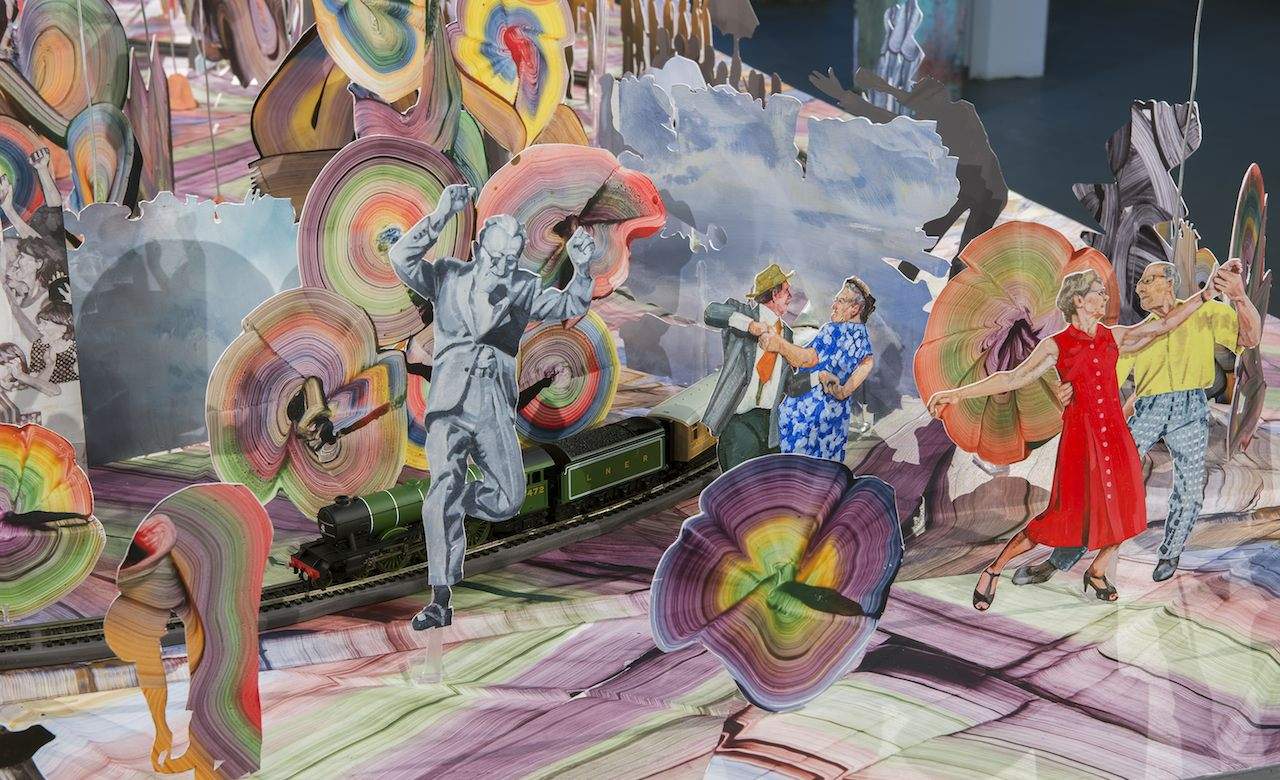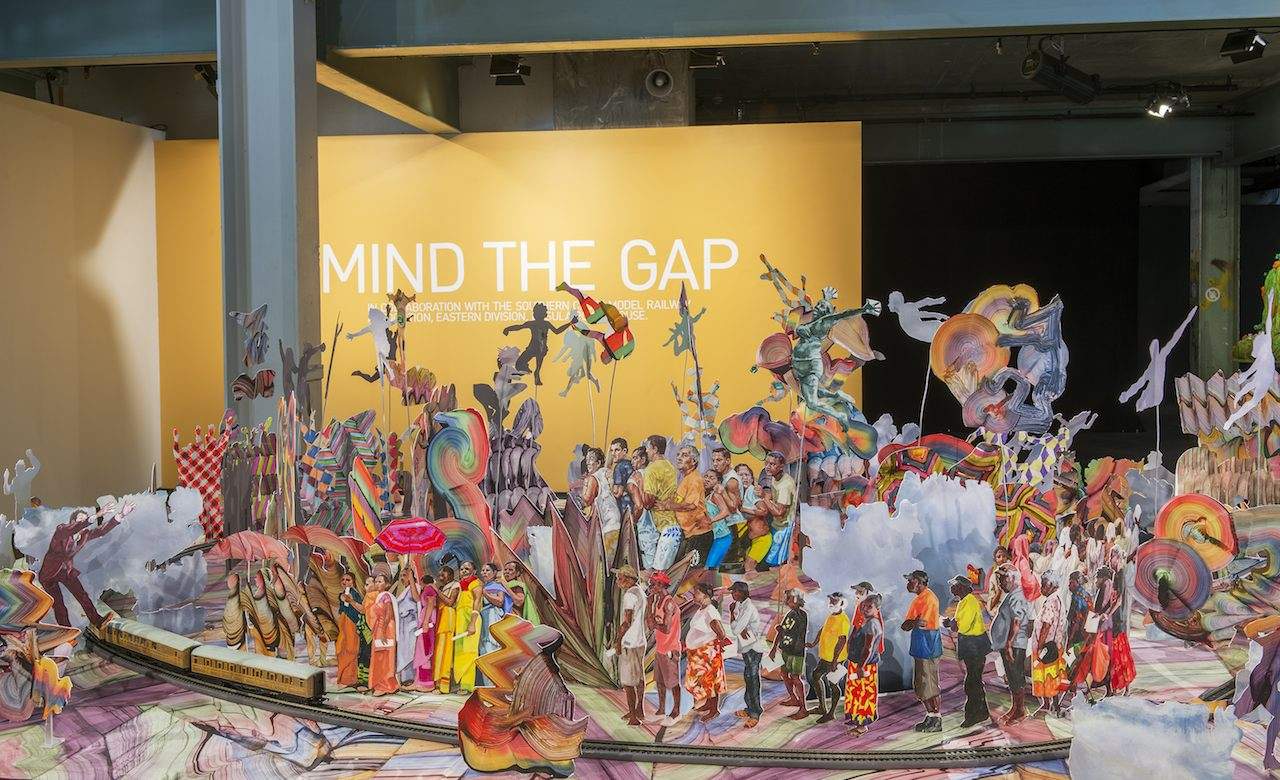Mind the Gap
It's a commute less ordinary when artists get their hands on model trains.
Overview
If a group of contemporary artists took over Hobbyco, it might look like this. Walk through the narrow gap between the boom gates at Casula Powerhouse and you’ll find five model railways that have been reimagined in fantastical ways.
The Infinite Everything by Claire Thackway and Gregory Hodge is a baroque-inspired installation built from paper cut-outs. Bursting with bright patterns, this miniature landscape is full of people caught in motion. From dancers to bathers, there is something quite joyous about these acrobatic figures. There also seems to be a focus on different cultural communities. Bringing together their distinct painterly styles, Thackway’s figurative work weaves in and out of Hodge’s kaleidoscopic swirls. These fluid brushstrokes are nicely paired with the rolling motion of the train.
There is an unfathomable amount of detail in Emily Hunt's Doctrine of Eternal Recurrence. Everything is textured with busy fingerprints. Filled with little shrines and Aztec-inspired totems, the lush wilderness holds a pseudo-religiosity. Hunt uses found materials in her work, picking up the pieces of modern waste — it's a recycled utopia of sorts.
The only self-portrait in the exhibition belongs to Owen Leong, who has chiselled his face into a mountain. Away from the sunny optimism of Thackway and Hodge, this work is dark and decadent. The mountain is made from black glitter and the little train carriages are filled with rose quartz. There is a pool of white salt that seems to be funnelling into a stalactite — or an inverted mountain — shining underneath the table. Like a lump of treasure in the shadows, there is something enticing about the symmetry of this work.
Jaki Middleton and David Lawrey's Time Trap is also on the darker side of things. Their “ghost train” travels on an ultraviolet ribbon of light through a dark trench that resembles a decaying Australian countryside. Unlike Hunt’s environment, these artists envision a somewhat dystopian future.
Due to mechanical difficulties, not all trains were operational during my visit. A bit disappointing but not entirely unexpected, these issues will probably be ironed out. On the whole, this exhibition is pretty damn delightful. The artists preserve the delicacy of the traditional model railway but colour it with their own form of social critique or self-examination. You can and should take the train out to Casula for a sight sure to please big and small.






